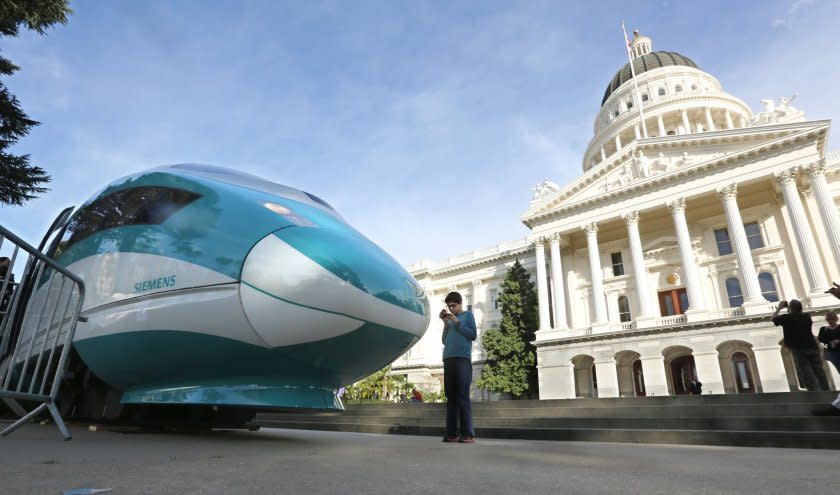Letters to the Editor: Four problems in California that are more important than building high-speed rail

To the editor: It is hard to argue against the basic proposition that California could use a high-speed rail line connecting Los Angeles and San Francisco. But the true cost has never been properly presented to the taxpayers of this state. ("It's now or never to save California's bullet train," editorial, June 17)
The project is now estimated to cost more than twice its original amount, and nobody believes that even the present proposed cost won't be doubled yet again -- which is not exactly unacceptable, until you consider these four facts:
Californians already stagger under one of the largest tax burdens in this country; the state is asking for a financial bailout from the federal government; we have a growing homelessness problem; and we desperately need money for maintaining and upgrading the infrastructure we already have.
Bill Schoettler, Bass Lake, Calif.
..
To the editor: You only have to look at a map of California to see how flawed the route of the bullet train is.
A train designed to go more than 200 mph is only going to go that fast if the route allows it to reach those speeds, and continue for a long time at that speed. The only way this train could ever do that would be to follow the 5 Freeway corridor and go from Los Angeles to the San Francisco Bay Area with no stops.
That would be the definition of a bullet train.
The current design, with stops in Bakersfield, Fresno, Madera and elsewhere, resembles more of a large Metrolink-style operation. After all the billions that will be invested in the system we're building, we'll be left with what is essentially a commuter train and not a high-speed rail network.
Gary Askenaizer, Sherman Oaks
..
To the editor: Any proposal to alleviate excess gas emissions, even one that you derided as not being "an actual plan," might be superior to projections in the latest high-speed rail business plan, which makes assumptions and assertions that ignore economic, environmental and geographic realities.
Just as the world continues to change since Proposition 1A was passed in 2008, high-speed rail could very well become obsolete before the trains start running in 2030.
Katharine Paull, Kagel Canyon

